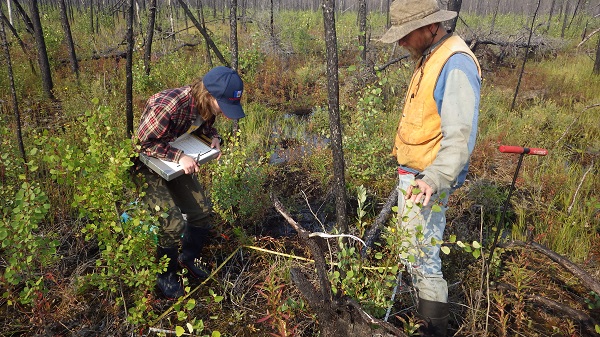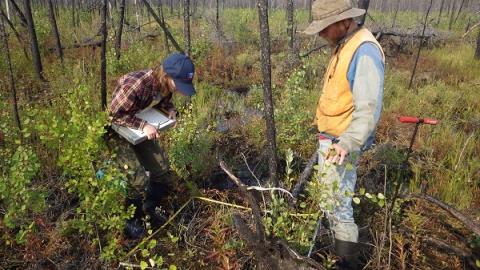ABoVE: Post-Fire and Unburned Vegetation Community and Field Data, NWT, Canada, 2018
A new dataset from the Arctic-Boreal Vulnerability Experiment (ABoVE) completes a four-year project that collected vegetation community characteristics and biophysical data from areas that were burned by wildfire in 2014 and 2015. The data include vegetation inventories, ground cover, regrowth, tree diameter and height, and woody seedling/sprouting data from burned and validation sites. In addition, soil moisture was collected for validation of the UAVSAR airborne collection, and depth to the frozen ground measurements were collected at nine unburned sites. The overall aim of the research was to investigate the impacts and consequences of the 2014-2015 fires in Northwest Territories.
ABoVE is a NASA Terrestrial Ecology Program field campaign conducted in Alaska and western Canada between 2016 and 2021. See all ORNL DAAC data from ABoVE.
Data Citation: Bourgeau-Chavez, L.L., M. Battaglia, E.S. Kane, L.M. Cohen, and D. Tanzer. 2019. ABoVE: Post-Fire and Unburned Vegetation Community and Field Data, NWT, Canada, 2018. ORNL DAAC, Oak Ridge, Tennessee, USA. https://doi.org/10.3334/ORNLDAAC/1703
Data Center: ORNL DAAC
Sponsor: EOSDIS


